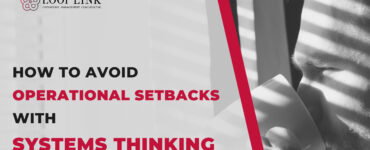There are several reasons why an entrepreneur may not feel ready to hire an Operations Coachsultant™. They may want to wait until they reach a critical growth point, they may need to secure more cash flow, or they may be in the midst of a major project that leaves them with a minimal amount of time for other commitments.
Whatever the reason is, one thing is certain: it’s normal to not be able to hire a consultant on a whim— especially when a business is in it’s early stages.
This is why I am committed to providing my readers with free, value-adding resources they can use on their own. While these resources aren’t a replacement for the comprehensive supports and services a consultant can offer, they are a fantastic starting point and can help entrepreneurs begin laying a strong operations foundation.
My standard operating procedure template is one of these resources.
What is a Standard Operating Procedure (SOP)?

If you aren’t sure what an SOP is, or why it matters, I encourage you to read my previous blog post, Why SOPs are Important to You and Your Business. It covers all the introductory information you’ll need to know before constructing your own SOP using the free template provided in today’s post.
How to Choose the Best Standard Operating Procedure Template for Your Business
Before creating your SOP, it’s always a good idea to consider which type of document will best serve you and your team.
For example:
For specific tasks, a simple checklist may be all that’s required to ensure employees uphold company standards and complete a process without missing any of the required steps. For more in-depth, overarching procedures, however, like mapping your company’s entire customer on-boarding process, a more formal document will likely be required.
Before deciding on a format for your business, I recommend researching standard operating procedure examples from other companies and asking yourself the following questions:
- Is a specific person or department responsible for this task/process? Or are there multiple touch points throughout the company?
- Is it important for you (or your management team) to be able to see when specific steps related to the process have been completed?
- Is this process subject to deadlines? If so, who will be setting the deadlines and how will those deadlines be communicated?
These questions can help you determine how robust or straightforward your procedural needs are and make it easier to implement a solution that will meet those needs.
Using the Standard Operating Procedure Template to write your first SOP!
The process of writing standard operating procedures can be broken down into three fundamental steps: discovery, definition, and documentation.
Let’s take a closer look at each of these core stages.
1. Discovery
This is the initial phase every business is required to complete when creating standard operating procedures. At this point in the process, it’s all about gathering the essential data you’ll need to establish a comprehensive and effective SOP. Companies do this in different ways— some send out employee surveys, others conduct an in-depth process analysis or schedule team brainstorming sessions. Whatever approach you choose, you should begin the discovery stage with a set of predefined questions in mind. Some common questions entrepreneurs ask at this point include “What are the most pressing procedural roadblocks my employees are facing?”, “Are there any bottlenecks in our current workflow process?”, and “What are some of our greatest pain points?”. This is also an excellent time to research standard operating procedure examples for small businesses (or larger corporations, whichever applies to you) to see what information other enterprises have used to create their SOPs.
2. Definition
Once you’ve gathered all feedback and applicable data, you’ll need to fine-tune this information to create clear, actionable goals. This phase is all about prioritizing the processes that are most urgent and that will have the greatest beneficial impact. Many business owners handle this phase at the management level, or bring in an consultant who is capable of providing insight from an outside perspective. The more strategically this part of the exercise is handled, the more advantageous your SOPs will be.
3. Documentation
This is a crucial aspect of creating standard operating procedures that will serve their purpose and benefit your business. The most successful SOPs are precise, detailed, and designed to account for all possible outcomes. To achieve this, business owners should dedicate time to reviewing their first draft, welcoming input from relevant teams and departments, and trial testing their procedures to ensure all necessary details have been included. It’s also important to determine which form of documentation will best serve your overarching operational vision. Workflow charts, checklists, automation tools, graphics, and manuals are all potential options.
Get Started With Your FREE Standard Operating Procedure Template
My main objective as an Operations Coachsultant™ is to support business owners and Agency CEOs to build businesses beyond themselves by streamlining processes, structuring business systems, and increasing profitability.
Standard operating procedures are a core component of what makes this objective attainable.
I’ve thoughtfully conceptualized this SOP template to be functional, user friendly, and viable. I believe that in order for entrepreneurs to truly shift from overwhelmed to organized, they need hassle-free tools and resources that are designed to create sustainable change— a belief I kept top of mind when creating this document.
I have full confidence it will help you set a foundation that will allow you to better control your projects and move your business forward.
Your Move
Unsure how to implement these solutions within your team?
Do you need an extra hand with team management?
Come over to our Free Exclusive Community where you can find support from other CEOs on the same journey.





